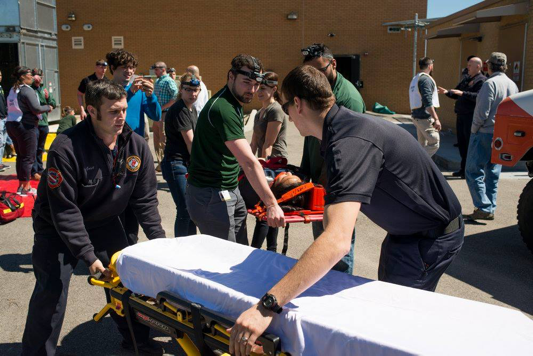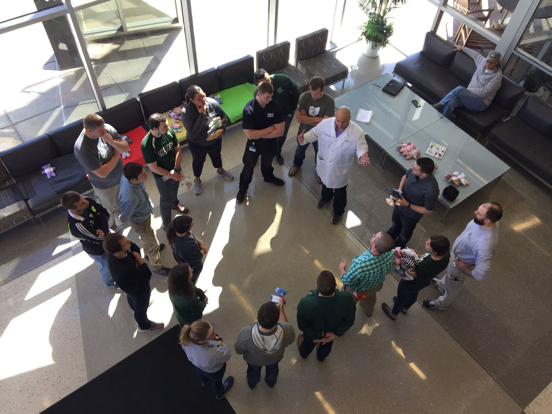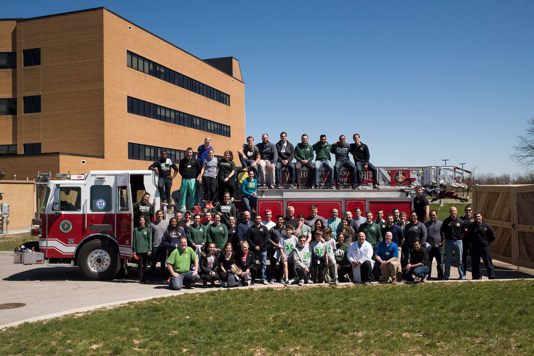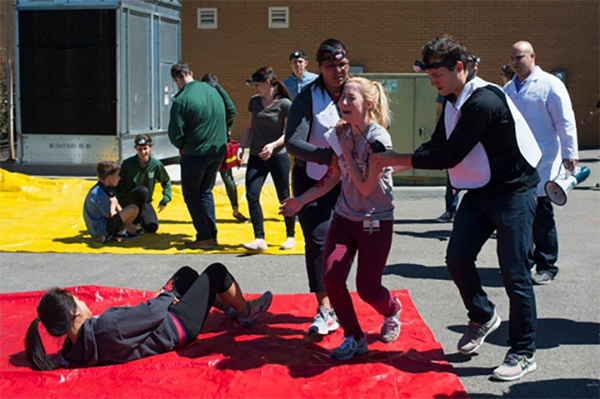In the fall of 2016, an attack at The Ohio State University, my alma mater and a school just down the road from my current medical school, hit close to home. Luckily, the threat was quickly neutralized through the flawless execution of a protocol practiced by a group of brave EMS crew and area physicians. It was at this moment that I knew I wanted to develop a Disaster Day with our EMIG. We needed to be as prepared as possible should we find ourselves in that situation. How can you launch a similar Disaster Day with your medical school's EMIG? Here are some tips.
Ways to Get Started
Begin by contacting your EMIG advisor or another EM physician, specifically either the EMS director or simulation (SIM) director. Our EMIG designed the Disaster Day with a local EM physician who was SIM fellowship-trained and had developed a similar program in the past with other medical schools. He then reached out to his former SIM fellowship director, who brought a team of SIM specialists to our event to make the scenarios as real as possible. We contacted our local EMS/fire crews in the city, as it was important for us to develop an interdisciplinary learning experience with those who spend every day on the front line. Don't be afraid to dream big and get your school involved! Depending on the size of the event you are envisioning, it is important to begin planning early.
Planning for the Event Day
Our Disaster Day began with two early lectures on the chain of command in an emergency situation and basic triage medicine skills. We then split up into small groups to for hands-on skills learning. Effective triaging represents one of the most important medical decision-making skills, not just in a disaster situation, but every day at home in the ED. The physician leaders of our disaster day had about 30 miniature teddy bears tagged with cards describing vitals and general appearance. We had to work as a team to grab all the bears, triage them from most critical (red tag) to least critical (green tag) as well as decide those teddy bears who sadly ran out of stuffing, so to speak (black tag). We had minutes to complete this and decide which teddy bears to send to the hospital first, all the while dealing with the sounds of sirens and fake screams. At the same time, our other group was learning basic EMS skills including tourniquet placement, emergent airway procedures, and proper placements of backboards and C-collars. Our day finished with two full-length simulations (a school shooting and a bomb/structural collapse) that put our skills to the test in realistic environments crafted by our SIM geniuses.
In addition to obtaining outstanding experience, this is a fantastic way to promote your medical school in the community and increase interest in EM amongst your classmates. When it comes to disaster medicine, hope for the best, but prepare for the worst.
Don't hesitate to reach out to me (mikemessina.emra@gmail.com) if you have questions about how to start a Disaster Day with your own EMIG!





